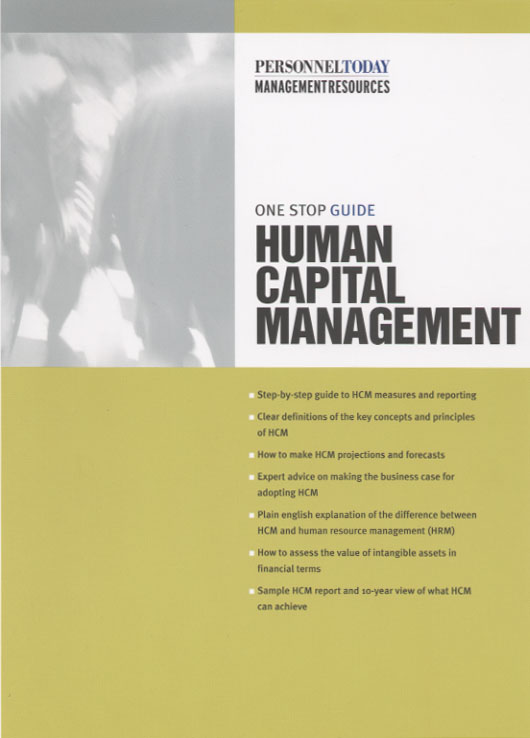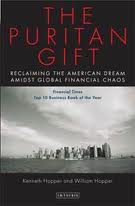Maturity as a management concept actually has a long history. This timeline shows how the Maturity Institute evolved and its response to some major influences on management thinking.
2020
- Redburn Purpose adopts OMINDEX® as a cornerstone of its ESG platform and 25 equity analysts become trained in OMINDEX® analysis
- OMINDEX® becomes a Registered Trade Mark, in the name of Organizational Maturity Services LLP, at the UK Intellectual Property Office
2019
- ‘The Mature Corporation – A Model of Responsible Capitalism’ – MI’s first textbook and full guide to OMINDEX.
- University of Cambridge Judge Business School commences study focusing on OMINDEX and Total Stakeholder Value and how ownership affects value outcomes
2018
- Maturity begins to be factored into company valuation
2017
- MI launches its global Banking Governance & Culture Project
- MI Value management System incorporates performance management
- MI approves OMINDEX as its official measurement system for organizational maturity. OM30 made available as open source document in order to facilitate wider learning (under its SIP protocol)
- MI’s measure of Total Stakeholder Value (TSV) created
- MI CEO Remuneration Model launched
- MI develops whole system management ‘Subject Leads’
2016
- MI professional membership upgrade
- MI instigates the Human Governance Steering Group
- First universal standard of human governance launched (HGR16)
- OMS LLP becomes a signatory to UN PRI’s 6 Principles
- Professor Larry Beeferman and Aaron Bernstein of Harvard Law School (LWP) are trained by MI to begin collaboration on human governance in the S&P500
2015
- MI adopts the term “Human Governance” as the all embracing discipline through which mature management practice is developed
- A seminal moment is witnessed at the London Stock Exchange as OMS LLP presents its methodology to investment professionals who begin to recognize the nature and magnitude of effective human capital management
- OMRs (organizational maturity ratings) are launched in conjunction with the first universal template for human capital reporting – the OM30 question set.
- The world’s first company and industry sector reports are produced for the investment community
- OMINDEX® is used for the first time to provide ratings data for the IoD’s inaugural “Good Governance Index”
2014
- Professor David Collings publishes ground-breaking, academic paper “Towards Mature Talent Management: Beyond Shareholder Value” in HRDQ
- MI has Associates in Australia, Chile, Iceland, Ireland, Portugal, Sweden, US and UK and has made keynote presentations to audiences in Australia, the Czech Republic, Denmark, Ireland, Norway, Singapore, UK, UAE and USA.
- Kearns and Woollard set up OMS LLP (Organizational Maturity Services) to build the market for mature, organizational management practice that directly links to company value and valuation.
- OMS LLP is introduced to S&P agency and decides to mirror credit rating scale with organizational maturity scale. MI starts to shift the maturity dialogue into the financial and investment communities through initial presentation to CFA and pension funds.
- HR Magazine (UK) recognizes MI’s work by including Dave Collings and Paul Kearns in its ‘HR Most Influential‘ rankings.
- The first PhD in ‘HR maturity’ is supervised at Simon Fraser University, Vancouver, Canada.
- MI’s Academic Panel attracts world renowned academics Professors Jaap Paauwe and Paul Boselie
- MI approves OMS LLP to carry out Organization Maturity Ratings
- Rob Scott completes MI’s first, official maturity project for New South Wales State Water company
2013
- MI appoints its first group of Associates
- Woollard completes first comprehensive human capital risk assessment, using the maturity framework, with private sector healthcare provider
- Woollard completes pilot maturity assessment with major transport sector organisation
- MI’s website launched in February and first Orientation Programme is run in September.
2012
- Asta Bjarnadottir joins the team to form the Institute’s first Council. Professor David Collings is appointed as Principal Academic to set up its Academic Panel.
- Kearns, Scott and Woollard discuss how to develop mature thinking and practice in human capital management. They agree to establish a brand new professional institution – based on Kearns’ ‘HR Maturity Scale’ – Institute of HR Maturity formed (the name changed to Maturity Institute in July 2014 to reflect the shift to whole organizational maturity analysis directly linked to financial performance)
- Kearns’ ‘HR Maturity Scale’ used as the foundation for further research and usage on a common platform.
2010
Kearns continues to teach his MBA course on ‘HR Strategy’ and alumni apply the lessons on assignments with local businesses in Iceland and early signs of adoption appear of mature thinking and people management practice.
2008
The Puritan Gift becomes an FT best seller with its ‘25 Management Principles’
2007
Stuart Woollard sets up the Management Learning Board at King’s College London to bring research evidence into organizational decision making
2005
- First, prototype, organization maturity ratings presented to the HR profession by Kearns in Personnel Today.
- The world’s first, academic research study, based on the ‘HR Maturity Scale’ is undertaken by Reykjavik Business School. Their findings from 118 organisations – “Diagnosing the maturity of human resource management in the organization.” – are presented by Ásta Bjarnadóttir and Finnur Oddsson at the annual conference of the Society for Industrial & Organizational Psychology
- Professor Asta Bjarnadottir invites Kearns to deliver the ‘HR Strategy’ course on the MBA programme at Reykjavik Business School.
2004
- In the wake of the failed Accounting for People Report, Kearns is commissioned by Personnel Today to write its first ‘One Stop Guide’ to ‘Human Capital Management’ and reporting

- Professor Jaap Paauwe identifies societal role for HR functions & organisations in his book HRM & Performance
- Rob Scott, in Australia, independently starts to explore the concept of HR maturity having been introduced to Kearns’ work, and how it can be applied in practice. Begins initial development that eventually made a significant contribution to ARC – early maturity assessment tool.
- Ásta Bjarnadottir, Assistant Professor (HR) at Reykjavik Business School is drawn to the Maturity Scale and invites Kearns to speak at the annual Cranet (Cranfield University HR Survey) Conference they are hosting.
2003
Kearns’ book ‘HR Strategy: Business Focused, Individually Centred’ (Butterworth Heinemann) officially introduces the ‘HR Maturity Scale’ as a means for gauging the effectiveness of both HR and business strategy.
Kearns becomes a regular commentator and contributor to Personnel Today
2002
Kearns collaborates with Dean Spitzer of IBM to discuss ideas on maturity and measurement. Spitzer illustrates the similarities to the CMM and P-CMM and inspires Kearns to transform his own ‘HR effectiveness scale’ into the ‘HR Maturity Scale’”.
2001
During the intervening years, of action-centred research on HR effectiveness by Kearns (while running his consultancy Personnel Works), Kearns further develops the concept and framework of an objective scale for gauging relative HR effectiveness within companies.
1995 onwards
- Academics begin to produce widely-recognised studies identifying links between HR & organizational performance
- The People Capability Maturity Model evolves from the CMM
- Kearns’ presents his ‘HR Measurement Scale’ at IIR conference ‘Measuring and Monitoring the HR Function’ (3rd & 4th April).
- Kearns presents workshop on his ‘Human Resource Management Scale’ at IIR’s ‘Developing Strategic Performance HR Measures’ event. (15th November)
- Kearns starts writing series of Financial Times (Prentice Hall) books on ‘Measuring HR and the impact on the bottom line’ (1995); ‘Maximising your ROI in Training’ (2000); ‘Measuring and Managing Employee Performance (2000 and subsequently translated for Chinese edition.)
1994
Maturity is recognized as an organizational issue, with a particular emphasis on software projects, with the advent of the ‘Capability Maturity Model (CMM): Guidelines for Improving the Software Process’ published by the Software Engineering Institute
1993
Kearns sets up PHIRM (Profitable Human Investment & Resource Management – an early prototype for what eventually became the Maturity Institute in 2013) and presents at Personnel Today’s conference ‘Proving the worth of the Personnel Function’. His first, draft version of the an ‘HR effectiveness scale’ is explained.
1992
TQM (Total Quality Management) heralds the dawn of a new era in people management. The role of HR departments starts to shift and measurement becomes a key issue.
1991
Kearns researches Toyota and its effectiveness vis a vis other manufacturers in the era of Total Quality Management, synonymous with the Toyota Production System and copied by firms around the world.
1990
While working in an automotive supply chain manufacturer Paul Kearns is introduced to the Toyota Way. The difference between their management philosophy with its emphasis on relationships, compared to the largest US auto manufacturers, is stark and compelling.
1986
Deming’s ‘14 Points’ published in ‘Out of the crisis’ and “Knowledge of psychology: concepts of human nature.” becomes a critical element in Deming’s “System of Profound Knowledge”
1979
Quality Management Maturity Grid published in Philip Crosby’s ‘Quality is free’
1947
Deming brings his quality thinking to Japan as it is rebuilt after WWII
1937
The Toyota Motor Corporation is born and the Toyota Production System – based on never-ending improvement and PDCA gradually emerges. Read ’50 Years in motion’ by Eiji Toyoda
1928
Walter Shewart introduces ‘The New Way’ in management with the PDSA cycle (Plan, Do, Study, Act)
1630
The Puritan Migration to America – modern management, as a discipline based on the values of creating ‘a little heaven on earth’, is born. Read ‘The Puritan Gift’ by Ken and Will Hopper (see review of the greatest management story ever told) for a complete review of American management from 1620 to the present day.
